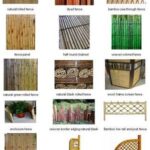The popular houseplant we call “Lucky Bamboo” has become a fad in the past few years. We’ve all seen them. Many of us have them. They are now sold in just about every grocery and discount store as tough, low light houseplants. Botanically speaking, Lucky Bamboo is known as Dracaena sanderana, a member of the Agave family. There are many misnomers in the plant world and this one is one of the most glaring examples. It is sometimes referred to and confused with Dracaena massangeana commonly known as “Corn Plant”. Again, this is incorrect. While both may resemble a corn plant neither are related to corn.
Lucky bamboo is considered a lucky plant in Feng Shui. Many believe this plant brings good luck and prosperity. It’s commonly given in celebration of the New Year, a new business venture, the purchase of a new house as well as graduation gifts.
Lucky bamboo needs little in the way of care. It thrives in low light and actually dislikes direct sunlight. Just add water as it evaporates out of the container. You don’t need to change the water each week. Algae growing in the vase does it no harm. And I’ve never had a smelly plant due to algae in the vase. If it bothers you, empty the container and place the plant in a holding jar with clean water. Wash the stones or beads and container with dishwashing soap and hot water, and rinse them well. Reposition your plant and fill the container back up with the stones to anchor it back in place.
Fertilizer needs for this plant are low. Any commercial all-purpose fertilizer with trace nutrients works just fine. Mine particularly like fish emulsion and seaweed products. Make sure to dilute the fertilizer to the proper amount to prevent burning. Remember that the stones displace most of the water that would normally be in the container. You will only be using a few drops of liquid fertilizer once every two months. Make sure to dissolve powdered or granular fertilizer in a seperate jar before adding it to your plant.
It’s up to you whether or not to transplant into soil. Lucky Bamboo does not need to be transplanted into soil. It will last for many years in glass, plastic or glazed ceramic containers or vases supported by river stones, pebbles, or glass beads. But, your Lucky Bamboo can be transplanted in soil, as long it’s kept moist. It is a tropical plant that grows in high rainfall areas of the world.
Some do’s and don’ts for this popular houseplant:
Don’t transplant your plant into a metal container. Fertilizer corrodes metal as does many substances in our drinking water.
Don’t use tap water if you know your water is high in either substance. Lucky Bamboo is sensitive to both. Spend the extra few pennies for spring water.
Do hose off the leaves under the faucet every week or so to control spider mites.
Propagation:
Like any fad, I find these plants still on the pricey side. Lucky for you, Lucky Bamboo is easy to propagate. Cut the stalk midway between the prominent nodes along the stem with a razor, making a clean cut. Be careful to relocate the newly cut side down. Mark the “down” side with permanent marker if necessary. One of your cuts may not have leaves. Don’t get confused. They must be planted in the same orientation as they were originally growing.
It will begin to sprout roots from the nodes underwater in a few weeks for inexpensive gifts or another dim corner of your home.
Nothing to it. Enjoy. And good luck to you!
© Rosa Salpietro, 2006






